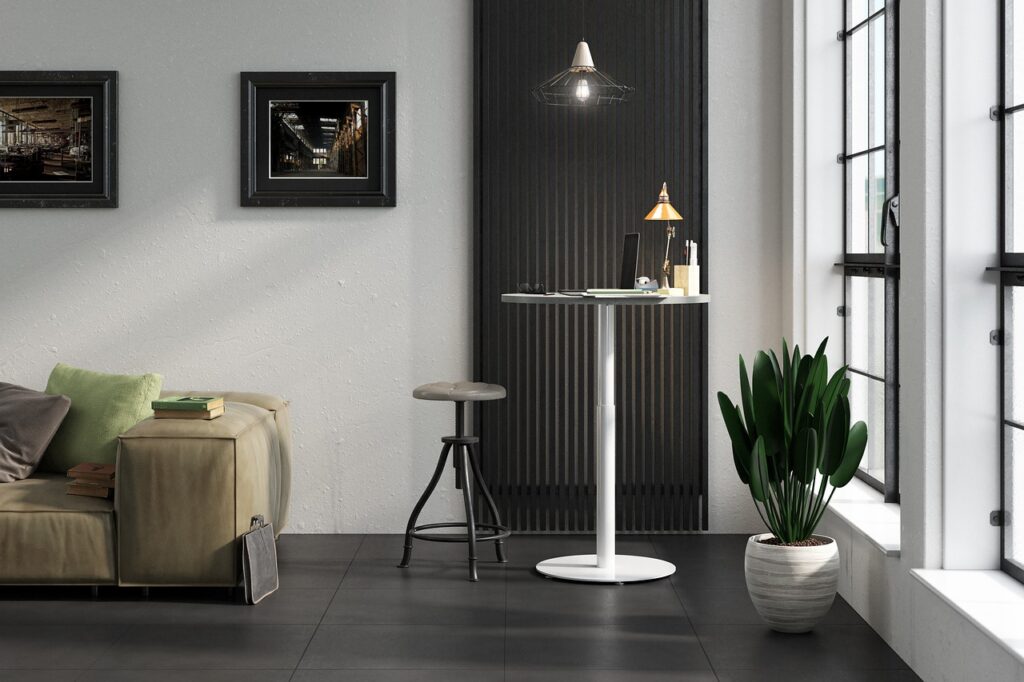The modern office is no longer a static environment; it’s a dynamic ecosystem designed to fuel creativity, collaboration, and, most importantly, productivity. Here, interior design for office space transcends aesthetics, becoming a strategic tool to optimize workflow and employee well-being. This ultimate guide will equip you to transform your office into an orchestra of efficiency, where every element plays a part in the symphony of success.
The Foundation: Understanding Your Needs
Before diving into design trends, interior design for office space demands a needs assessment. Consider these crucial elements:
- Who are your employees, and what are their work styles? Do they thrive in open floor plans or require dedicated quiet zones?
- What is your company culture? Is it fast-paced and collaborative, or does it require focused individual work?
- What is your brand identity? How can the design reflect your company’s values and mission?
The Melody of Functionality: Space Planning for Peak Performance
Now that you understand your needs, interior design for office space focuses on functionality. Here’s how to create a space that sings:
- Embrace Flexibility: Move beyond rigid cubicles. Utilize open floor plans with designated areas for focused work, brainstorming sessions, and relaxation. Modular furniture allows for easy reconfiguration to suit changing needs.
- Ergonomics Matter: Invest in comfortable, adjustable furniture that promotes good posture and minimizes fatigue. A well-designed workstation is an investment in employee health and long-term productivity.
- Natural Light is Key: Maximize natural light with skylights and large windows. Strategically placed task lighting combats glare and ensures optimal visual comfort throughout the day.
The Harmony of Technology: Seamless Integration for a Smooth Workflow
Technology is an integral part of the modern workplace. Interior design for office space should integrate features like:
- Wireless charging stations for mobile devices, keeping employees connected without the clutter of cords.
- Interactive whiteboards and digital displays to enhance presentations and brainstorm sessions, fostering a culture of innovation.
- Smart building systems that adjust lighting and temperature based on occupancy and preferences, creating an energy-efficient and adaptable environment.
Biophilic Design: Nature’s Symphony for Well-being
Studies reveal that incorporating nature into the office can significantly improve employee well-being and focus. Consider these biophilic design elements:
- Abundant plants and greenery: Liven up the space with a variety of plants, improving air quality and creating a calming atmosphere.
- Natural materials: Wood, stone, and other natural elements evoke a sense of tranquility and promote a connection with the outdoors.
- Access to outdoor spaces: Courtyards, balconies, or even a simple connection to nature through large windows can significantly impact employee well-being.
The Rhythm of Collaboration: Fostering Teamwork and Connection
A successful office fosters collaboration. Interior design for office space can cultivate this by incorporating:
- Designated collaboration areas with comfortable seating, writable surfaces, and whiteboards to spark creative brainstorming sessions.
- Meeting rooms equipped with audio-visual technology to facilitate productive team huddles and presentations.
- Social spaces: Break rooms with coffee bars or game tables encourage interaction and relaxation, fostering a stronger sense of community within the organization.
The Grand Finale: Cultivating a Space that Inspires
Interior design for office space goes beyond functionality. Consider these finishing touches to create an inspiring environment:
- Art and Décor: Carefully curated artwork, sculptures, and decorative accents that reflect your brand identity can add personality and spark creativity.
- Personal Touches: Allow employees to personalize their workspace to a certain degree, fostering a sense of ownership and comfort.
- Comfortable Seating Areas: Invest in comfortable lounge furniture to create inviting spaces for informal conversations and idea sharing.
Conclusion: A Symphony of Success
Interior design for office space is more than just paint colors and furniture. It’s a strategic investment in your company’s most valuable asset – your people. By creating a space that is functional, inspiring, and promotes well-being, you can cultivate a productive and thriving work environment where your employees can perform at their best. Remember, a well-designed office is the first note in the symphony of your company’s success. So, pick up your metaphorical baton and conduct the design process to create a masterpiece!





